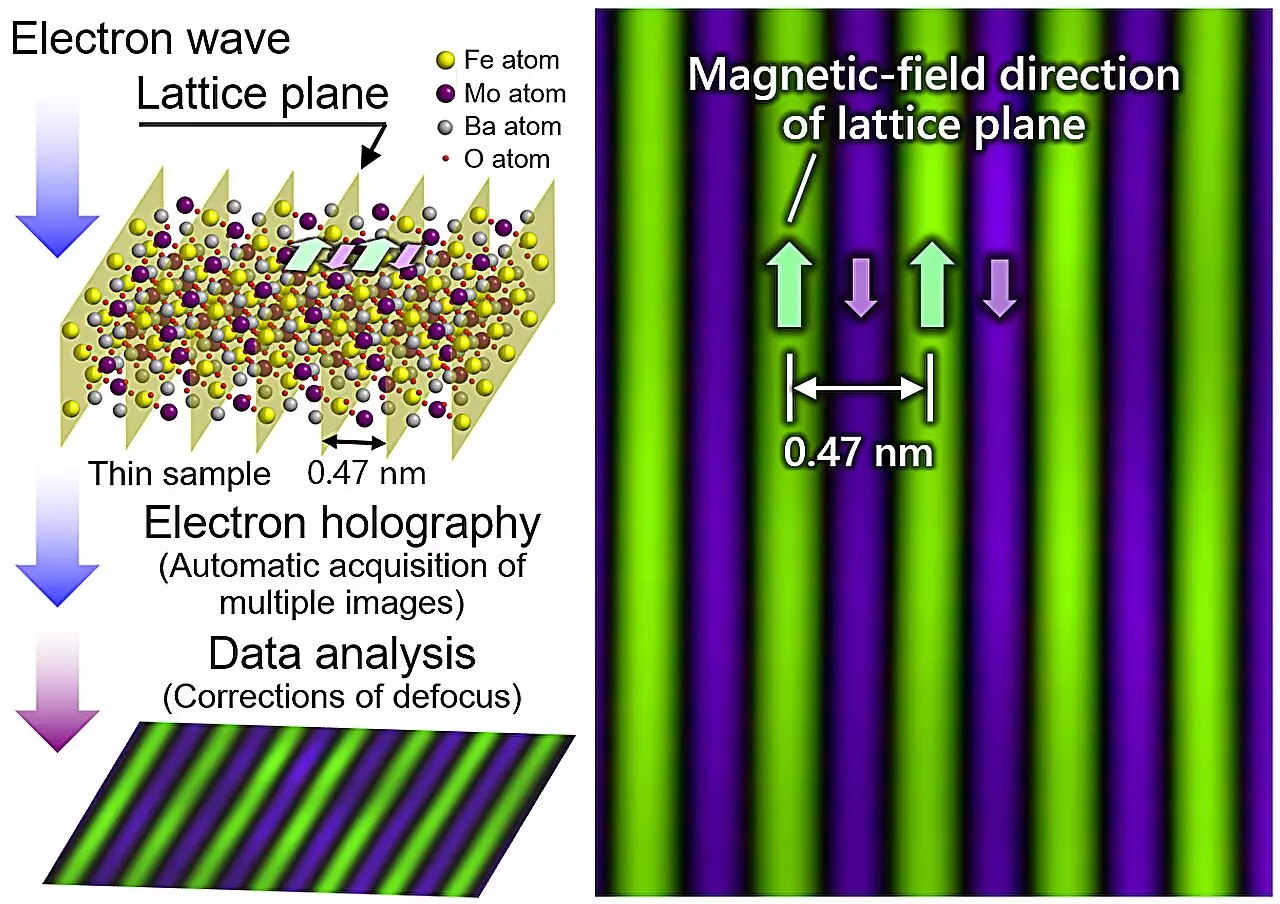In a groundbreaking development, a research team from Japan, in collaboration with various institutions, has successfully visualized magnetic fields at the atomic level within a crystalline solid. This achievement represents a significant advancement in the field of material science and paves the way for new discoveries in electronic devices, catalysis, transportation, and energy generation.
The researchers utilized Hitachi’s atomic-resolution holography electron microscope, equipped with state-of-the-art image acquisition technology and defocus correction algorithms. By automating the control and tuning of the device during data acquisition, the team was able to speed up the imaging process significantly, capturing 10,000 images over 8.5 hours. Through specific averaging operations and noise reduction techniques, they obtained clearer images with distinct electric and magnetic field data.
One of the key challenges addressed by the research team was the correction of minute defocusing, which led to aberrations in the acquired images. By implementing a post-image-capture correction methodology, the team was able to analyze reconstructed electron waves and eliminate residual aberrations, allowing for the precise observation of atomic positions and phases with magnetic field information.
The team conducted electron holography measurements on samples of Ba2FeMoO6, a layered crystalline material with distinct magnetic fields in adjacent atomic layers. By comparing their experimental results with simulations, the researchers surpassed the previous resolution record, achieving an unprecedented observation of magnetic fields at a resolution of 0.47 nm. This breakthrough opens up new possibilities for directly observing magnetic lattices in various materials and devices, shedding light on hidden phenomena related to electron spin configurations in magnetic materials.
The researchers believe that their remarkable achievement will have far-reaching implications for scientific and technological advancements. The atomic-resolution holography electron microscope developed as part of this project is expected to be utilized by various parties, leading to advancements in fields ranging from fundamental physics to the development of next-generation devices. This progress is crucial for the realization of a carbon-neutral society, as it will enable the development of high-performance magnets and highly functional materials essential for decarbonization and energy-saving efforts.
The successful observation of magnetic fields at the atomic level represents a significant milestone in the field of material science. The innovative techniques and technologies developed by the research team have the potential to revolutionize various industries and drive progress towards a sustainable future.


Leave a Reply